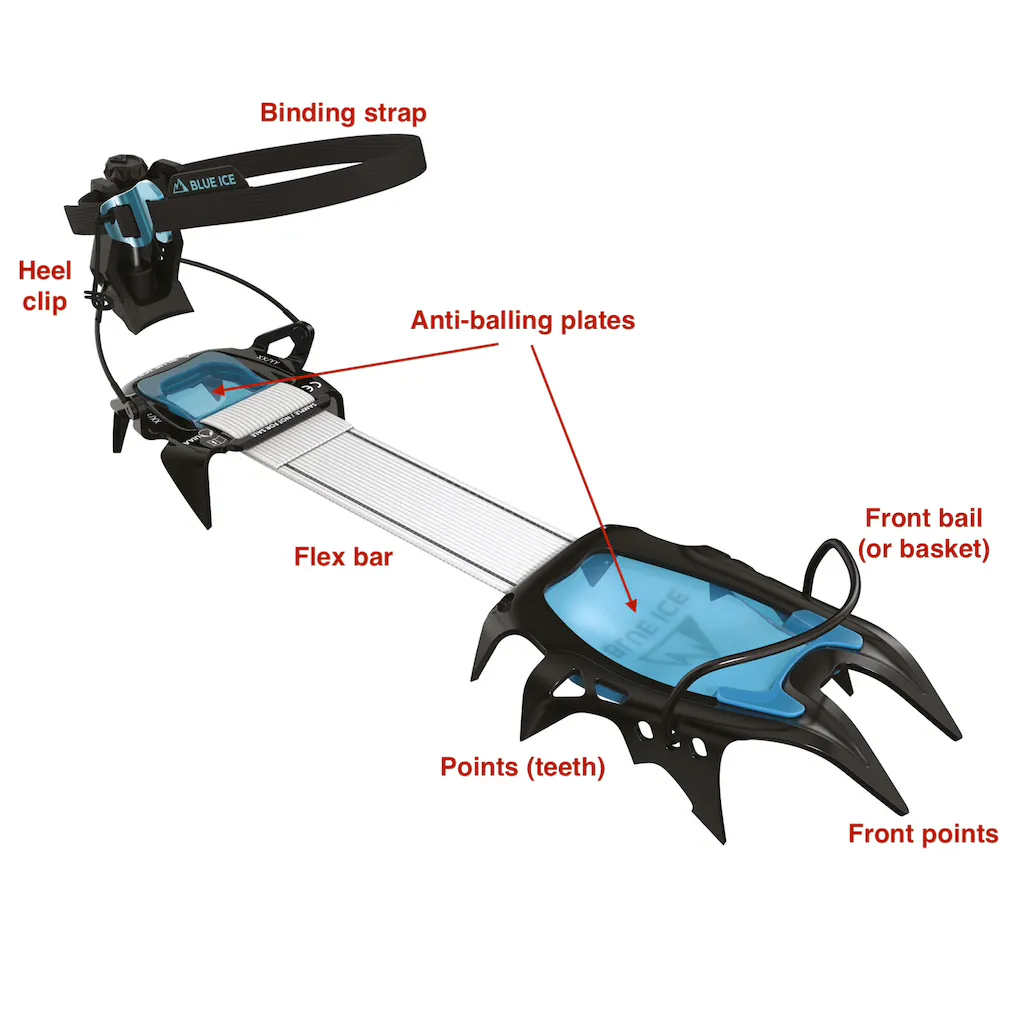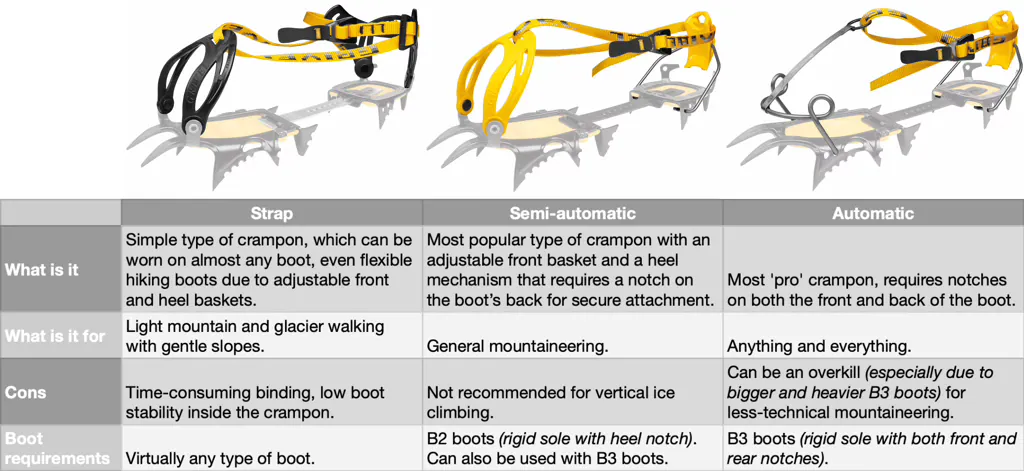Crampons
Crampons are metal spikes that are attached to the boots, enabling safe movement on snow and ice in the mountains. They are an essential piece of mountaineering equipment. There are various types of crampons, designed according to the type and level of the planned activity.
Crampons have 3 binding systems, which correspond to the level of activity, as well as to the type of the boot (which also should correspond to the level of the activity):
strap, semi-automatic (hybrid), and automatic (step-in).

Crampon anatomy
All crampons share the same anatomy, with some elements differing based on the application:
- Binding system (strap, semi-automatic, or automatic),
- Number of points (usually 10, 12 or 14)
- Type of front points (horizontal or vertical)
- Material (steel or aluminium)
- Construction of flex bar (rigid or flexible)
Anti-balling plates prevent snow build-up underneath the crampon. Snow accumulation in near-freezing temperatures can reduce ground contact and lead to loss of balance.

How to choose crampons?
First of all, choose the binding type (and the boot) by what you will and won't be doing. If you will have an occasional mountain outing with a bit of glacier travel - just rent strap crampons and they will be enough for that one time. If you explore mountains enthusiastically, yet are not engaging too much in technical and vertical climbing - get semi-automatic crampons and B2 boots. For technical and/or high altitude (over 5000m) alpinism - automatic crampons and B3 boots.
10-12 points is standard for glacier travel, 12 being more stable. 14 (and more) points are for technical applications.
Horizontal front points are most common, while vertical are much more efficient in ice climbing (it's a matter of preference whether it's a mono, or two point configuration then).
Aluminium is lighter, suitable for travel on packed snow, but not strong enough for hard ice and, especially, any rock. Steel is much stronger, durable and universally applicable.

